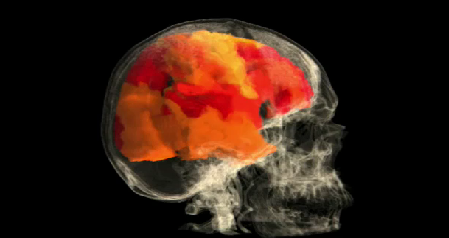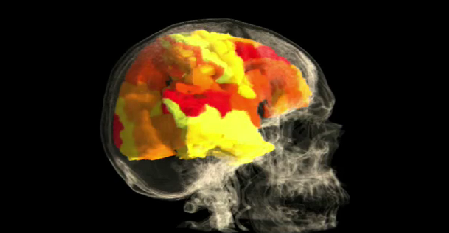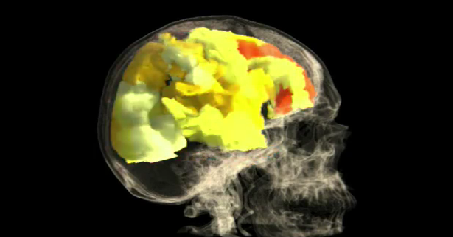Barry Komisaruk, Rutgers University professor and possible hero, has been conducting research on the elusive, legendary female orgasm, trying to figure out what happens to our brains when all that fun stuff is going on. Well, for the first time in scientific history, he has been able to visually capture — with an fMRI machine — the goings-on of the female brain before, during, and after climax. It’s real, and it’s spectacular. And even more fun: there is animation involved. Suffice it to say, however, this will probably not be the next Pixar release.
In an effort to discover what the brain doesn’t do in people — men and women — who are not able to achieve orgasm, Komisaruk decided to take on the noble task of first seeing what happens when someone can. And this involved having a woman lie in a functional magnetic resonance imaging (fMRI) machine and proceed to give herself an orgasm. While this occurred, scans were taken of 80 different regions of her brain, with the different parts of it color-coded using shades inspired by hot metal. (Dark red is the “coolest” color, progressing to the hottest hot, white.) The more oxygen enriches the blood in the brain, the more different parts become stimulated, resulting in a neurological fireworks show.
And because it’s easily one of the most titillating things you’ll read today, we are using the same blockquote that Geekosystem used, because, OMG ladies — this is quite a trip:
As the animation plays, activity first builds up in the genital area of the sensory cortex, a response to being touched in that region. Activity then spreads to the limbic system, a collection of brain structures involved in emotions and long-term memory.
As the orgasm arrives, activity shoots up in two parts of the brain called the cerebellum and the frontal cortex, perhaps because of greater muscle tension. During orgasm, activity reaches a peak in the hypothalamus, which releases a chemical called oxytocin that causes pleasurable sensations and stimulates the uterus to contract. Activity also peaks in the nucleus accumbens, an area linked to reward and pleasure.
After orgasm, the activity in all these regions gradually calms down.
What you don’t see in the film is the big, huge grin on the woman’s face when she gets to that last part. And while we’re having some trouble trying to embed the video, you can watch it at The Guardian and take a gander at a couple of hot, hot brain scans:
Oh yeah.
OH YEAH.
BOOM SHAKALAKA.
And that is what happens during a female orgasm.
These kinds of scans may also serve other purposes in studying the brain, helping neurologists determine how to train the brain to handle conditions like chronic pain, anxiety, and depression.
The images for the full animation, which actually runs for five minutes, were compiled by Nan Wise, a Ph.D. student and sex therapist working in Komisaruk’s lab. On her work, she says: “It’s my dissertation. I’m committed to it.”
We applaud your dedication, Ms. Wise. And, really, isn’t commitment the key to reaching one’s, ahem, full potential?
(The Guardian via Geekosystem)











Published: Nov 16, 2011 04:15 pm